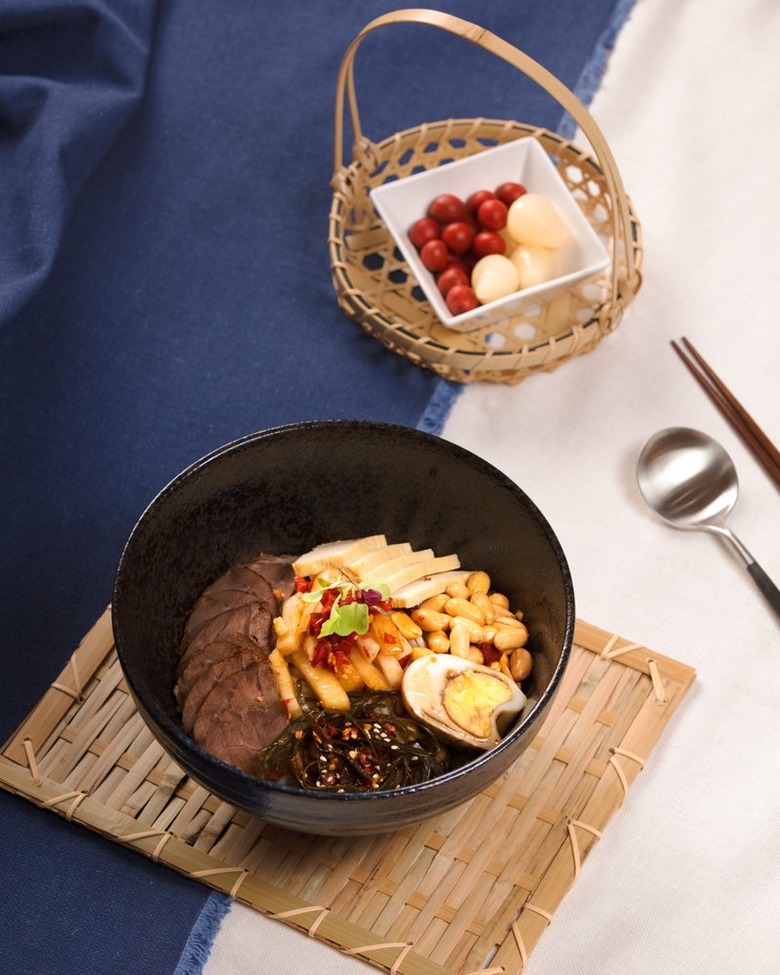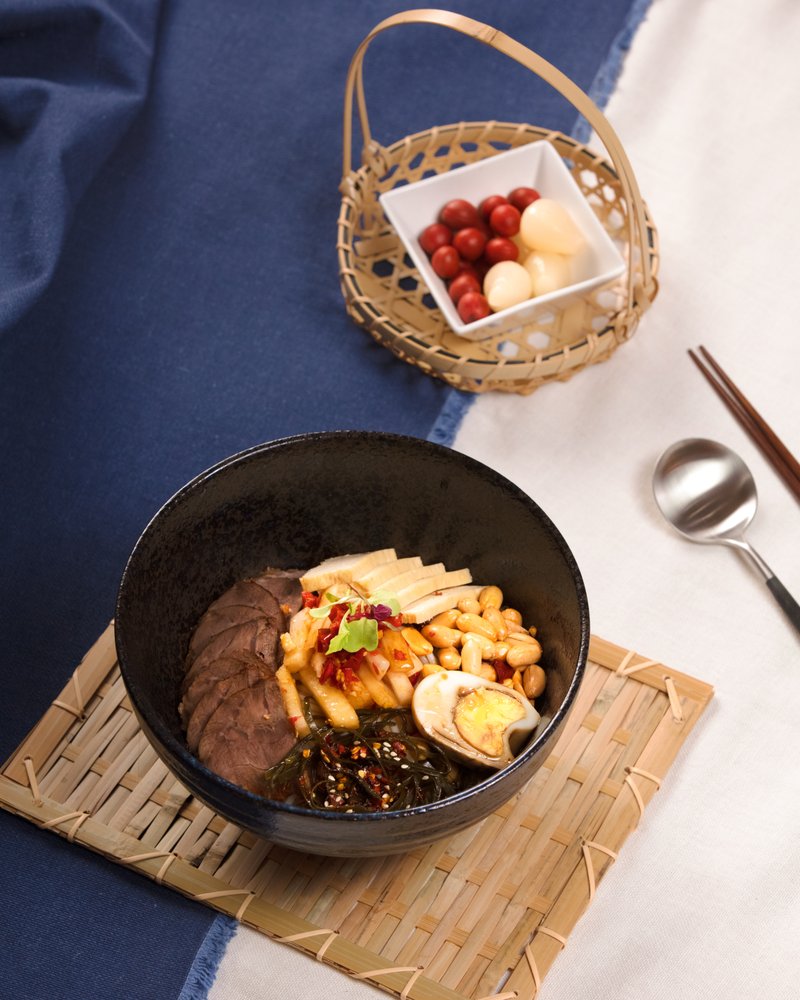Hunan Slurp's Chef Still Asks His Grandma For Recipe Advice
For the people of Hengyang, China, food is a significant manifestation and pride of the local community's identity and heritage. "We wake up to the slurping sound from rice noodle shops in little alleyways, and go to bed with warm rice noodle soup in our stomachs after night-longs of drinking and chatting. This custom defines us, the people of Hunan," said chef Chao Wang, of recently opened Hunan Slurp, thinking back on his early life there.
The Daily Meal experienced the soft opening of the East Village's new contemporary Chinese eatery, sampling a menu comprised of regional Hunan rice noodles and plates.
Wang was born in Hengyang, Hunan, a southern province in China famous for its epicurean traditions, and his cooking is heavily influenced by what he learned watching and helping his grandmother — to this day he still consults with her on his dishes.
Wang's hometown is the birthplace of the Fish Fillet Mifen, prepared with an overnight broth while the simmering pork bone soup is boiled on low-heat until the lucid base turns into milky white. In this version, the noodle and the fish slices are placed inside the broth (by you, at your table), and the chef recommends sprinkling "mizuna" and other pickled vegetables on top, which draws out the umami in the soup.
Another signature rice noodle is the Hometown Lu Fen, which is also the only noodle dish without soup on the menu. Its sauce is made with over 30 herbs and spices to create a "layered" effect when paired with the sliced beef, char su, peanut, cucumber, bean curd, and crispy soybean on top.
Other standouts actually included the cabbage, a vegetable I am not crazy about on its own, but whatever it was marinated in kept me picking at it from the start of the meal to the end, and the eggplant, served as small cylinders that have been hollowed out and replaced with green peppers that look innocent but are extremely spicy — just a head's up, depending on how much of a big shot you want to be. The menu is divided into three sections, hot, cold, and what you might know best as "large plates" which includes the noodle dishes.
If you sit in the back, you can see right into the kitchen, which is always fun, and the pale-colored slats span from the ceiling to the floor to mimic the color and shape of noodles.
One more thing — they do serve frog legs, and based on everything else we tasted (despite all of the food adventures I've had, including grasshopper tacos, I'm still not ready for this) the bold are encouraged to hop on board and give it a try. This isn't your typical Chinese takeout fare.

